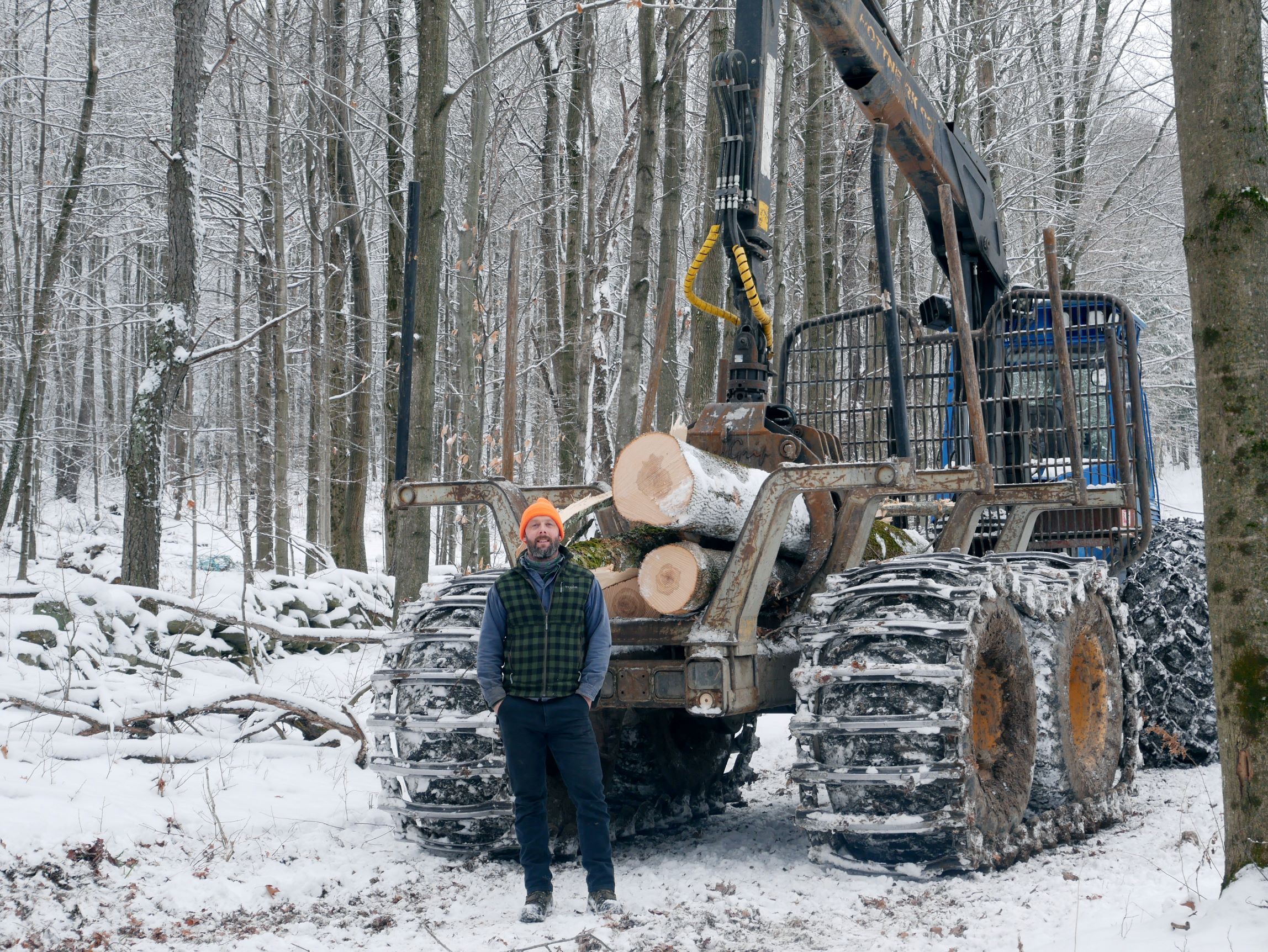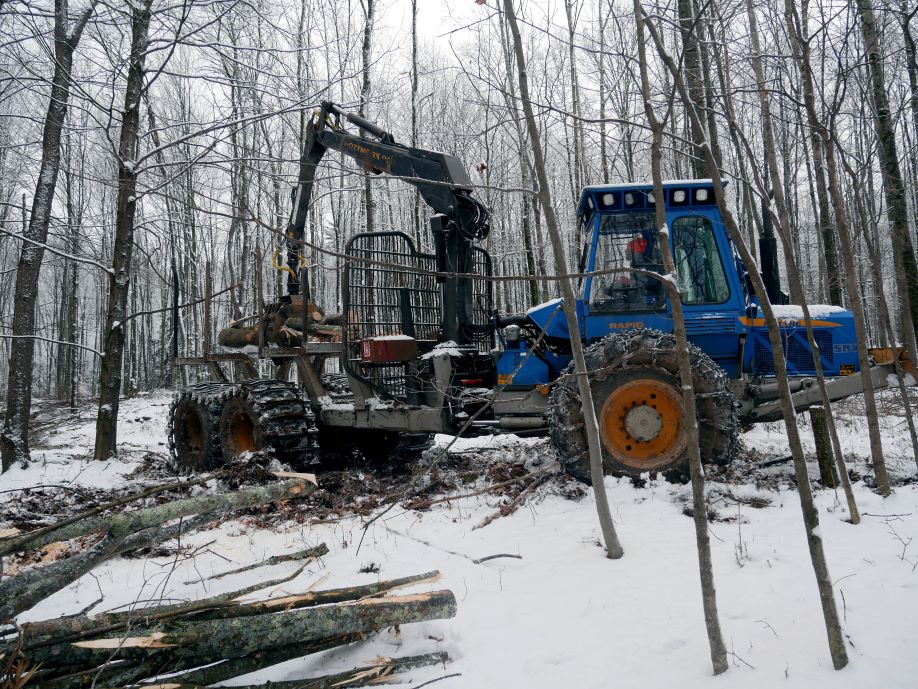“With more warm winters and wet summers, I had a ton of downtime,” Benjamin Lepesqueur, a first-generation logger, said of his business increasingly coming to a halt.
“If you want to log full time, you have to figure out a way to get into the woods…we just don’t have the weather we had ten to fifteen years ago,” Lepesqueur, who owns Giddings Hill Forest Products in Bakersfield, said.
Skidding wood, a conventional logging practice used to drag a tree by a cable to a landing where it can be cut and loaded onto trucks, must be done with firm, stable ground conditions. Climate change has led to more severe weather and less time in the woods for Vermont loggers.
“You’re putting a ton of weight and tractive force on the ground…You’re pulling against standing trees, which damages them, and you’re making ruts,” he said of the labor-intensive process he’d been using for over a decade. Lepesqueur got his undergraduate degree in geology in 2007 and graduated into the recession. He started logging for others and eventually started his own business.
“Physically, I was also pretty beat up after 12 years of that, so I wanted to get into mechanized logging,” Lepesqueur said.

In 2021, he began the switch to cut-to-length (CTL) harvesting – a method of logging first developed in Scandinavian countries as a low-impact alternative, for both the environment and loggers, when compared to the conventional skidding method. A CTL harvester fells, de-limbs, and cuts the tree into usable lengths in the forest to be transported by a forwarder. A forwarder carries the wood to the landing, which is a staging area where it is prepped for road transport.
Because the forwarder loads and carries the forest products to the landing (rather than the operator needing to get in and out to chain trees to a skidder), it is less physically demanding on loggers. It also reduces the environmental impact of logging. The erosion and downslope transport of sediment is vastly minimized, Lepesqueur said. The wheels of the forwarder are fitted with tracks to better distribute the weight of the machine and reduce soil compaction, too. It also makes logging more profitable.

“When you’re mechanized, you can cut so much faster that you can make money on cutting lower-grade wood. It increases the number of jobs you can profit from because you’re not as reliant on high-quality wood,” Lepesqueur said. Lepesqueur estimates he can do jobs in half the time with the CTL method compared to skidding while increasing his gross sales by nearly 20 percent.
Yet, the new system was so much faster that it started to bottleneck with only one person. He needed a designated forwarder operator. Unfortunately, the forwarder he owned was slow, unreliable, and unsafe for an employee.
In 2023, he received a $60,000 Working Lands Enterprise Initiative Grant to upgrade his forwarder. He is currently searching for an employee to help him with logging as well as managing firewood delivery and the farm’s 7,000-tap maple sugarbush. He says the upgrade also helps maintain a healthier forest.
“Most foresters are leaning into this cut-to-length method now. You’re leaving a lot more woody debris in the forest and allowing the nutrient base to build up,” Lepesqueur said of his desire to be a good steward of the land. “Farms in Vermont have gotten through to the general public that local farming is good; local food is good. We are local tree farmers, and we’re doing the same thing.”
